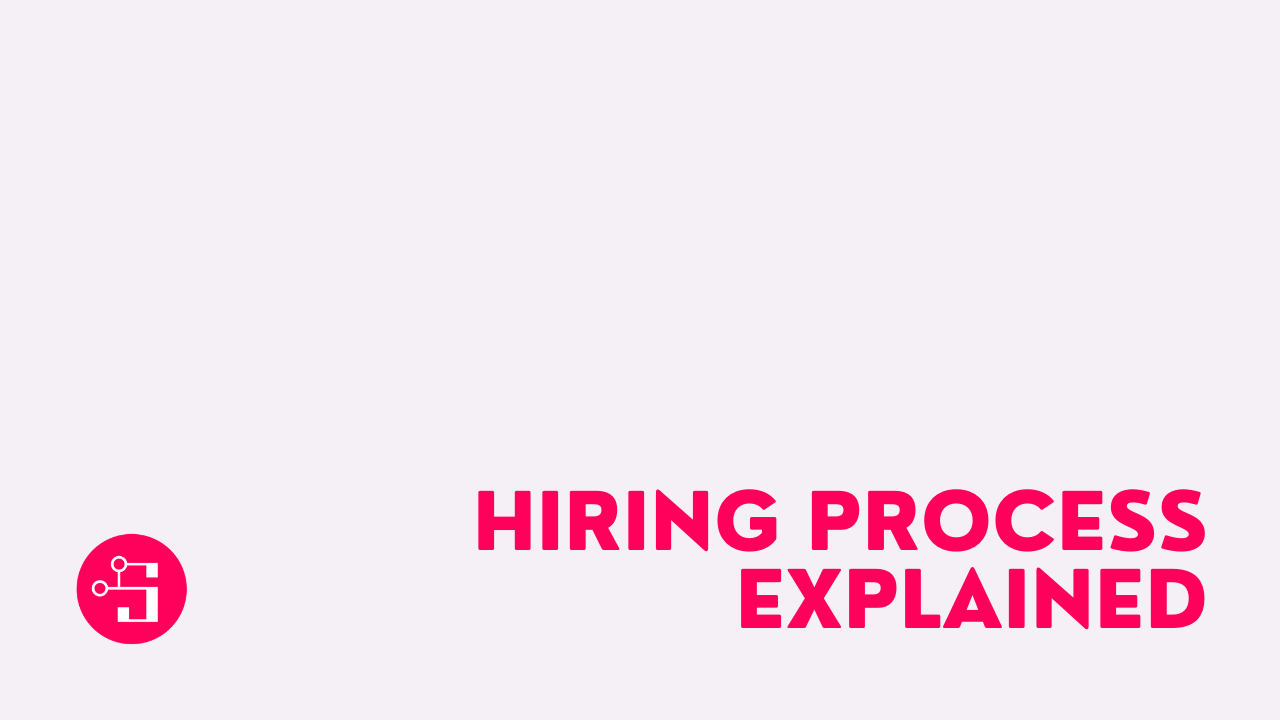Efficiency in the hiring process is necessary for businesses to fill vacant positions with qualified staff.
Candidates have to go through an extensive applicant tracking system before employment. It is common to see the hiring process of companies unique, making it difficult to design a uniform template.
What is the Hiring Process?
The hiring process is a set of steps designed to find, choose, and recruit suitable candidates for a company.

Even if many differences are common in hiring processes across companies, most firms adopt nine steps explained below:
Steps of the Hiring Process
Step 1: Recognize a position that needs to be filled
It’s pointless to initiate a hiring process when there’s no position available at the moment or in a short time. Businesses could also need to hire individuals or teams for workload management, expansion, etc.
Recognizing a position is available to kick-starts the hiring process. Without a recognized need, several opportunities for growth may not receive full attention.
Step 2: Design a recruitment framework
Recruitment sets off the next stage of hiring candidates to fill available positions.
When designing the recruitment framework, businesses have to determine who conducts interviews, screening criteria, and other necessary details.
After an internal assessment and confirmation that a new employee is needed, publicizing the position is necessary.
Step 3: Summarize required and preferred job description
Outlining requirements from applicants provide enough information you need to consider candidates for a position.
It is vital to include minimum requirements your company wants in a candidate. Also, adding preferred requirements for candidates to stand out is essential. Some recruiters usually add attached salary and benefits to the available position.
Step 4: Initiate recruitment marketing
The Web landscape has made hiring staff for open positions much easier. With simple job posts on your company website, you could get massive applications sent in for available career opportunities.
And for companies keen on a vigorous recruitment marketing campaign, more platforms are available. Businesses with career positions can post their vacancies on job boards, listing sites, and search engines.
Most of these approaches to hiring employees are free, but promoting your career ads may attract some monetary investment.
Step 5: Follow-up recruitment marketing effort
Paper-based recruitment is gradually becoming obsolete, particularly at initial and intermediate contact phases. Most recruiters may prefer phones, email, social media channels, LinkedIn, applicant tracking systems, etc. for follow-up interviews.
Step 6: Receive and review applications
After initiating the hiring effort, applications are bound to come in, depending on your ad campaigns.
Reviewing applications helps downsize tons of received applications to a suitable candidate pool. When recruiters are through with reviewing applications, it becomes a lot easier to shortlist applicants for interviews.
Step 7: Host initial screening and narrow down candidates and conduct follow-up interview
When the window for receiving applications closes, what’s next is conducting an interview(s) for potential employees.
Most businesses already have a template of interview questions to ease screening candidates. Also, live chat and phone interviews are becoming increasingly common, particularly for cross-border screening sessions.
Step 8: Assess applicants
Candidates’ assessment is the pre-penultimate step for completing hiring processes. The complexity of the hiring process, the size of your organization, and some other factors determine several assessments of qualified candidates.
Most companies begin their applicant assessment through an examination of soft skills. Firms may decide to confirm emotional intelligence, numeracy skills, reading comprehension, problem-solving ability, and personality traits first.
Also, it is common for recruiters to conduct background checks at different levels. Some companies may conduct checks into applicants’ employment history, social media presence, credit checks, criminal records, etc.
It is also common for businesses to conduct reference checks. Most of these checks focus on finding out about candidates from their previous schools, employers, etc.
Some tests may be a part of applicants’ assessments. These tests may focus on confirming the skills of applicants. Drug tests could be involved too, based on the job nature.
Step 9: Offer positions to qualified candidates and initiate onboarding
Negotiations could be the last step in hiring employees for some businesses. In some cases, it could be the penultimate step before ceremonial onboarding activities take place.
The preferred candidate(s) for your position should get one or a series of letters with more details about your vacancy.
Your offer letter to candidates should contain benefits, company policies, and other essential T’s and C’s.
When the candidate responds positively to your effort, your hiring process rounds off.
Plan Your Own Hiring Process
It is important to design a hiring process that suits your company’s objectives and appeals to candidates.
When your hiring process adapts to your company’s immediate and long-term needs, finding top applicants is less hassle.
Bottom Line
Planning the hiring process involves a certain set of procedures to find perfect candidates. It is also important to follow industry practices when hiring the right client to maximize ROI long after onboarding ends.

